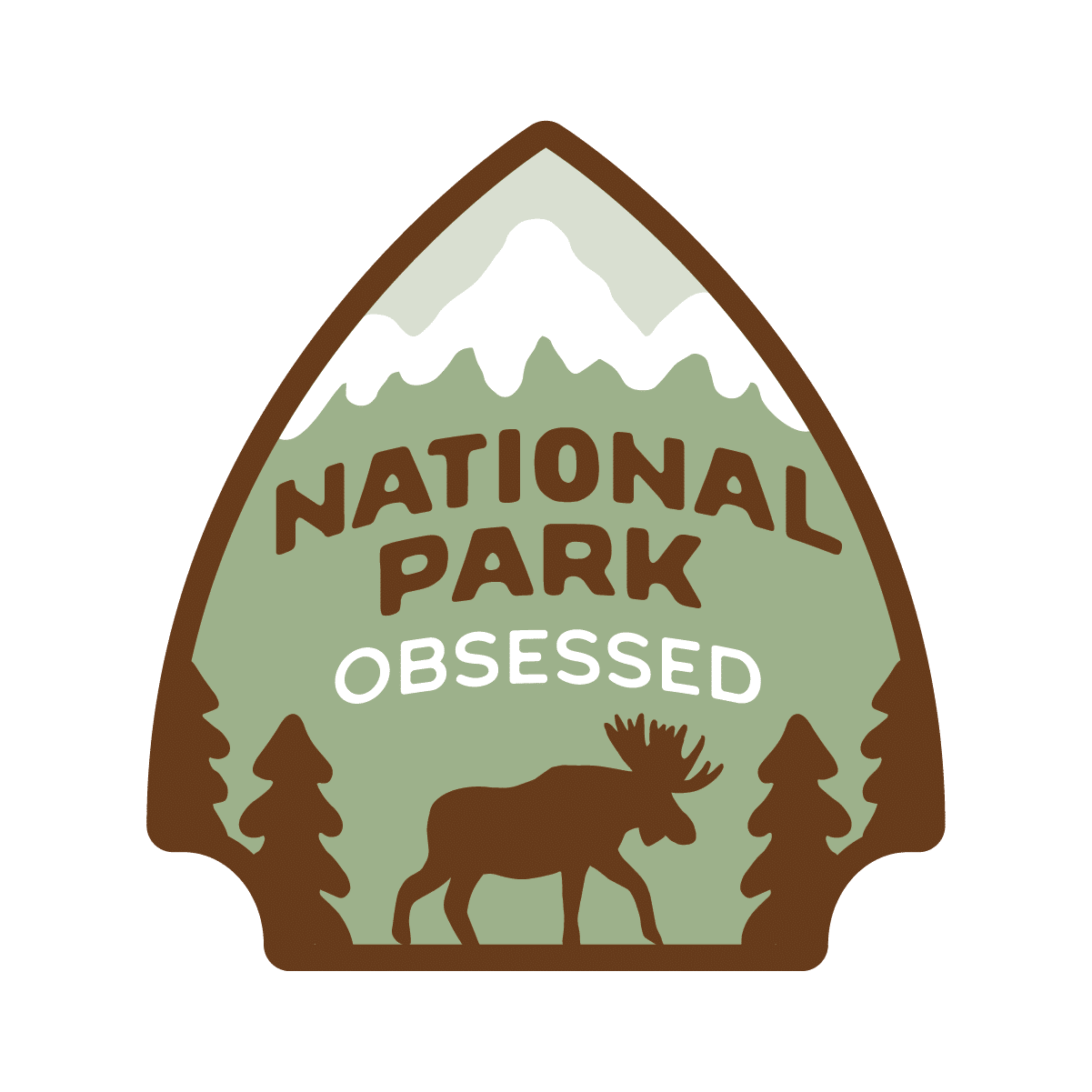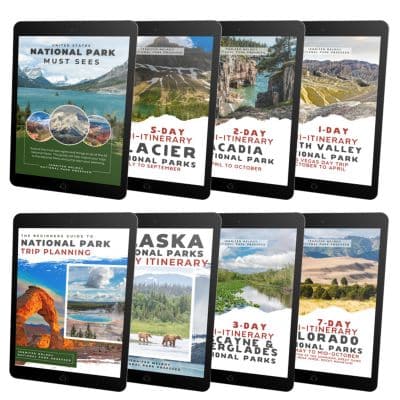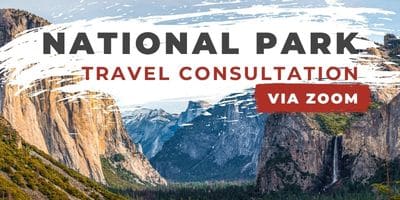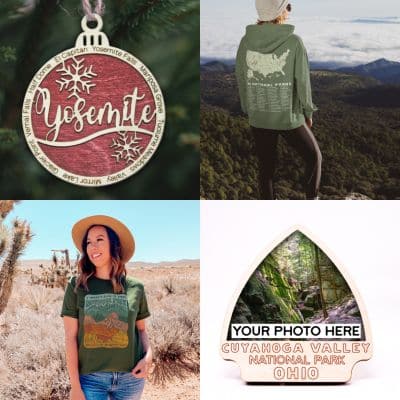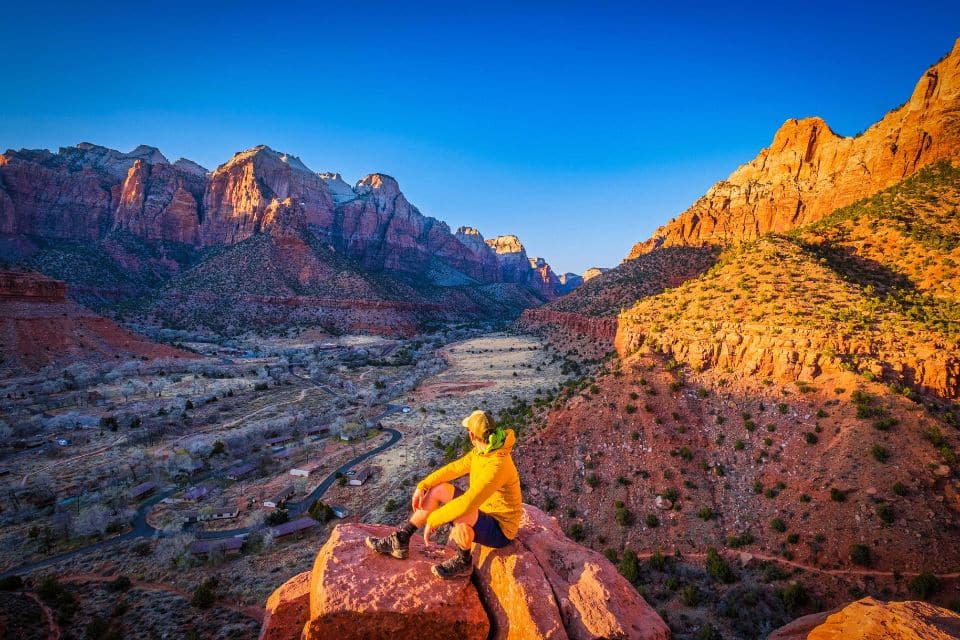
29 Amazing Hiking Tips for Beginners
- Natasha
- Last Modified February 7, 2024
- First Published on February 5, 2024
If you’re looking for some hiking tips for beginners, you’ve come to the right place. No matter if you are planning to hike a mountain, in the desert, or get out on a local easy trail these hiking tips will be sure to help navigate and guide you into the world of hiking.
We go on 3-4 hikes per week in the summer, but I didn’t grow up hiking. I had to learn these hiking tips to get where I am now and all are some of my favorites that I would tell any friend looking to get into hiking!
Table of Contents
This post may contain affiliate links, meaning if you book or buy something through one of these links, I may earn a small commission at no extra cost to you! Read the full disclosure policy here.
NATIONAL PARK TRIP PLANNING RESOURCES
Here are some of the best resources to plan your national park travels. If you are new to the parks, National Park Travel Planning Bundle is the perfect resource to help you plan your dream trip, get it planned, and reduce the stress of planning your National Park trip.
- National Park Itineraries: Let someone else do the planning with our pre-planned National Park Itineraries for less than $6 a day.
- Get Free Entrance: The America the Beautiful National Park Pass is an $80 pass that is valid for 12 months. The pass provides free entrance to the National Parks and more than 2,000+ other federal lands.
- Make sure you have a National Park Passport: Here is my favorite National Park Passport.
- For Flights: Use Skyscanner to get the best prices on your flights.
- For Rental Vehicles: Browse for deals on rental cars at RentalCars.com. Or rent an RV or campervan with RVshare or Outdoorsy.
- For Hotels: I book my hotels on Hotels.com and Booking.com.
- For Vacation Rentals: I love VRBO for my vacation rentals.
- For Camping: If making camping reservations in the parks, I use Recreation.gov. For private campgrounds, I use Campspot.
- Buy Outdoor Gear: I get most of my outdoor gear at REI.
- Get Trail Maps on your phone with
- Looking for National Park Gift Ideas: Here are the 55+ Best National Park Gifts Ideas.
- Don’t forget travel insurance: I get my travel insurance through World Nomads.
Hiking Tips for Beginners
1. Check the Weather
One of my top beginner hiking tips is to pay attention to the weather. If there’s one thing I’ve learned from living and hiking in Banff, it’s to always be prepared for everything. We’ve gotten snowed on in the middle of July before, and I was happy I had layers and a down jacket to keep me warm.
If you’re nervous about your first hike, pick a day when the weather looks like it’s going to be optimal sunshine. And if you wake up and the weatherman was wrong and it’s pouring rain, don’t hesitate to change your plans. Thunderstorms and lightning, while you’re on top of a mountain, are things that don’t mix well.
2. Choose the Proper Hiking Trail
The first thing any new hiker needs to do is choose the best hiking trail for them and their abilities. That means paying attention to things like distance, elevation, average time, logistics, routing, and taking into account their physical fitness ability. Remember that everyone hikes at different paces and abilities so what works for your friend may not work for you.
- Distance: Look up the hike you want to do on apps like AllTrails and take note of the length. Then decide if you have it in you to go 3 mi, 5 mi, 10 mi, etc.
- Elevation: It’s not only distance you have to look at but elevation. See what the elevation gain is on AllTrails to determine how much incline you can handle for the day.
- Time: Read reviews and see what the average person is completing the hike in to determine how much time it will take you. I like to also ask Facebook groups or read helpful blogs to decide on average time.
- Weather: I’ll go into this more later, but make sure to check the weather before heading out. It will significantly affect your movement.
- Fitness Ability: Are you physically fit, or do you usually move a little slower? Take into account your fitness when picking out a hiking trail.
- Logistics: Is the trailhead hard to find? Do you have to drive hours to reach it? Will you have to bushwack to get to a path? Will you be out of service the entire time? These are all things to consider when picking a hiking trail.
3. Study AllTrails, Maps, and Reviews
AllTrails is my favorite app to use when planning out my hike. I suggest any new or experienced hiker download it and pay for a subscription at least in the summer so you can download their topography maps right to your phone and can access them offline.
AllTrails gives you all the info you’ll need on most hikes in your area, including helpful details like the start of the trailhead, elevation, elevation gain, average time, and distance. I also love reading reviews for critical things I need to know.
4. Plan Your Route
After you’ve picked out your trail, it’s time to plan your hiking trip. For me, this means picking a day when the weather will be nice, packing what I think I will need for the duration and scale of the hike, and hopefully finding a few buddies to tag along!
5. Tell Someone Your Plan
This is especially true if you are a new hiker who is going on a solo hike. You need to tell someone the hike you are setting out for, your start time, and the intended return time. That way, they can call Search and Rescue if something goes wrong and you don’t make it back.
When possible, leave them the search and rescue or emergency response number for the area you are hiking in.
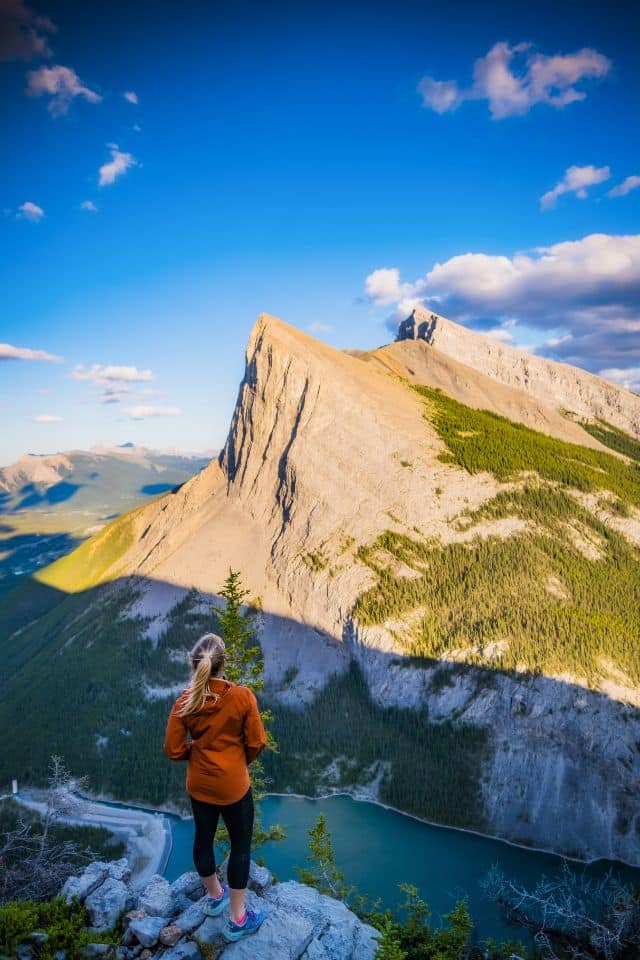
6. Set Realistic Hiking Goals
While bagging multiple peaks in one day or hiking 15 miles may seem like a great idea, it’s not always attainable. One of my top beginner hiking tips is to set realistic goals and expectations. Disasters can happen when people set their expectations too high and feel the need to keep pushing themselves when they should have turned around.
7. Pack Accordingly
Packing right for your first hiking trip is key. You must be prepared for the environment and the conditions you will likely experience.
In most mountain areas, this means layers and layers. One of the best hiking outfits for women and men includes a down jacket and rain jacket, no matter what. Then, depending on the hike, I may bring items like gaiters for snow, microspikes, hiking, extra socks, gloves, a buff, or a hiking hat.
In deserts, it can mean carrying extra water and sun protection. Depending on the desert and the prevalence of shin-high cacti, thick pants can be useful to prevent scratches and getting stuck by the cacti.
You can see my full list of hiking essentials here.
8. Avoid Overpacking
Packing right doesn’t mean overpacking your backpack. You’ll have to carry everything on your back up to the trailhead, so keeping your weight down is important. Pack what you think you will need and any extra items that may come in handy if there’s an emergency. (Things like a pocket knife, first aid kit, extra energy bar.)
9. Get a Backpack that Fits
It’s important to pick a day pack, and a hiking backpack if going on a backcountry trip that fits your frame and will hold all that you want to carry with you on your hike. Remember that men and women have very different frames, and they make different backpacks for each. If possible, go into the store to try on a few and find what you like before making a purchase.
10. Consider an inReach
We recently purchased the Garmin inReach that allows for us to have a GPS for navigation which keeps us safely on the trail. Then should the worst ever happen we have an emergency button through Inreach that notifies Search and Rescue should we ping the satellite.
It’s a lifesaving device, that also does nifty features like send short messages and even allow for friends and family to track your whereabouts when you’re on the trail. It’s expensive, but I can’t put a price on peace of mind and my life since I do a lot of hiking in the backcountry.
11. Pack the Appropriate Amount of Food
One of my top hiking for beginner tips is to pack your food wisely. Determine how long you’ll be hiking for and pack the appropriate amount of snacks to give you energy. Plus extra, should things not go as planned.
On almost any hike I do I have an energy bar, homemade energy balls, dried fruit, and some candy. For lunch, I typically pack a sandwich and a few other odds and ends too. Remember you’ll burn more energy than usual as you’re hiking and you’ll likely be hungrier than normal on your hike.
12. Invest in Proper Hiking Shoes
Make sure you have good hiking shoes or boots for your hike. It’s one of the most important pieces of hiking gear you have. Once your feet get tired and uncomfortable, the rest of you goes quickly. Go to the store and try on a few pairs of solid hiking boots for you and pay attention to the fit and comfort of them.
13. Invest in the Rest of the Gear Later
I know I mentioned getting a good pair of hiking shoes and a good backpack before, but other than a few of the hiking staples wait on investing more money into gear. Hiking gear can get very expensive very quickly, so it’s best to figure out if you actually enjoy hiking and plan on doing it frequently before committing thousands of dollars to it.
After you go on a few and find out you want to spend your entire summer outside, then invest in awesome hiking socks, mid-layers, jackets, hiking poles, and more!
14. Avoid Hiking Alone
Hiking solo should be avoided by all hikers, not just new hikers. Obviously, this isn’t always possible, people’s schedules don’t always line up and you can’t wait on someone else to get into the great outdoors.
For your first few hikes, I recommend finding a friend or chatting in local groups to see if you can meet up with people. If it’s absolutely not going to happen stick to easier, well-marked, and well-trafficked trails until you get more comfortable.
15. Beginner Hikers Should Start Early
Now, we’re getting into the actual day of hiking. It’s best to start early so you don’t risk hiking too late and coming off a trail in the dark. Thankfully, in many mountain areas the sun rises early and sets late in the summertime so you have plenty of time to explore.
Before you start out on any hike make sure you have enough time to complete the entire hike before dusk, unless you intend to hike in the evening and catch sunset. In this case, make sure you have a headlamp in your pack.
16. Don’t Start Off Too Fast
A big mistake many beginner hikers make is starting on the trail at a fast pace, and then they are worn out 1km in. Remember to pace yourself when hiking. Especially if you are climbing a mountain where the hardest and steepest part of the hike often comes a couple of hours in when you near the summit.
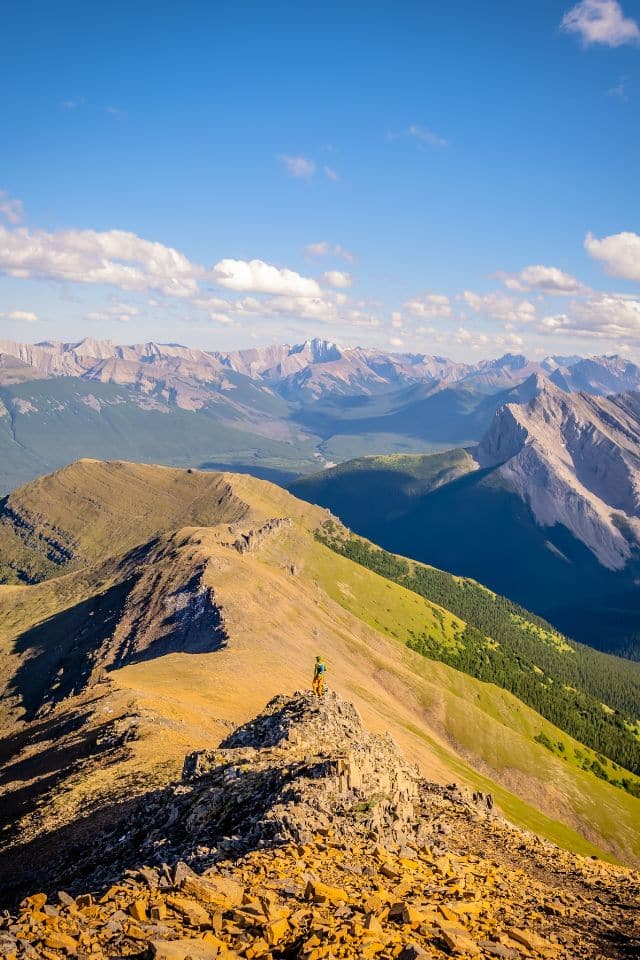
17. Pack Bear Spray when in grizzly country
You shouldn’t go on any hike in bear country without bear spray, it’s one of those backpacking essentials you need. There are plenty of grizzly and black bears living around North America and while your chance of coming across one of the trails is relatively small it does happen.
No a bell is not going to save you and neither is a boom box should this happen. Your only line of defense against a bear in the woods is bear spray. Which is essentially pepper spray for bears.
(PS) Remember, bear spray doesn’t do any good if it’s at the bottom of your backpack. A bear isn’t going to wait on you to dig through your stuff and pull it out in the wild. Keep it accessible.
If you are hiking in an area where there are no bears or dangerous creatures, you are in luck as you don’t need bear spray. But be aware of other animals that may be a threat.
18. Don’t Forget Sunscreen
Just because it doesn’t feel hot when you’re hiking in the mountains does not mean the sun is not shining. Remember to put on your sunscreen on your arms, legs, face, and neck before setting out. And don’t forget behind the ears! It often gets overlooked.
19. Stretch and Prepare
Before you start your hike take some time to stretch out your quads, calves, and other muscles you’ll be working them hard soon!
20. Don’t Shortcut Switchback Trails
When you’re on a well-marked switchback trail, don’t cut them. It’s something I see quite often from newer hikers and should be avoided. Switchback trails, especially maintained ones were made like that for a reason. Not only can it be unsafe to cut them, but it also can cause damage to the ecosystem off the trail.
21. Don’t Feed the Wildlife
Please don’t feed the wildlife while hiking. Don’t feed the chipmunks, don’t feed the squirrels, don’t feed the birds, and for the love of God don’t feed a bear. Not only is human food obviously not part of an animal’s diet, but feeding them actually puts them in danger.
When park visitors feed animals, intentionally or not, it brings them closer to populated spots and can cause human-wildlife interactions, which typically turns out much worse for the animal.
22. Always Practice Leave No Trace
On that note, I need to say to always practice Leave No Trace principles. Always leave the wild the same or better than you found it. Clean up after yourself, pick up your trash, pick up other people’s trash, don’t disturb the wildlife, and don’t pick the wildflowers no matter how pretty they may look! A big no-no.
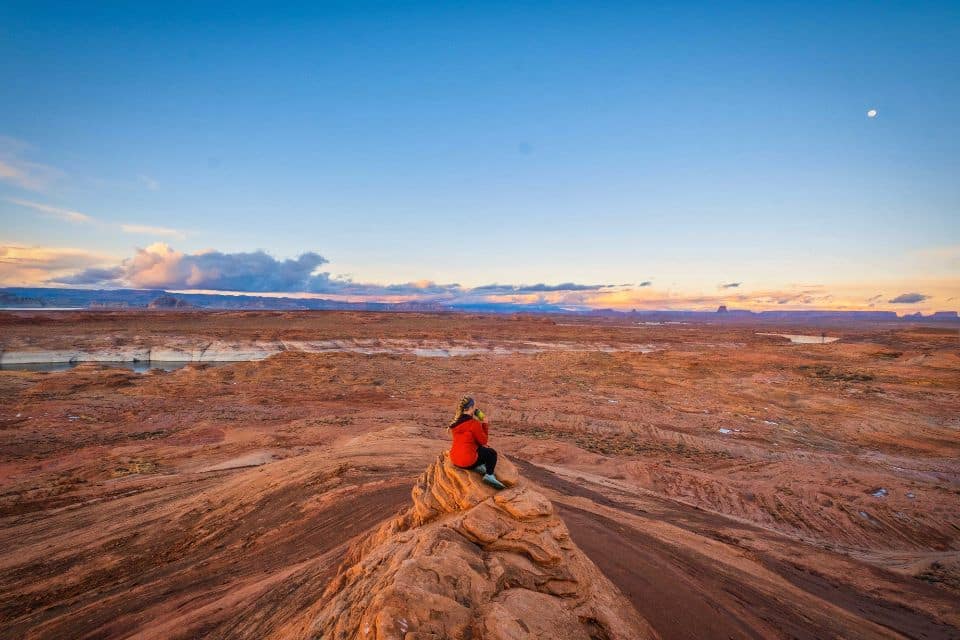
23. Stay on the Trail
The best way to not get lost in the wilderness is to stay on the trail. This can be tough if you are really off the grid, but most beginner hikes are well-marked enough to keep you on the right course.
24. Respect Other Hikers
Always respect other hikers when on the trail. Give people their space, say hello to passerbyers, let faster hikers pass you, and don’t blast loud music on the trail. Also, remember that proper hiking etiquette is to let the ascenders pass you as you descend.
They have the “hiker right away.” That means if you are coming off the mountain and encountering hikers climbing up on a narrow trail, move to the side and let them pass.
Keep your dogs leashed, some people are scared of them. If you have to go “number 2,” do so in an official bathroom. Yield to bikes and horses on the trail, take out all your trash with you – even banana and orange peels. Nothing should be left behind you!
25. Stay Hydrated
It’s important to bring enough water with you on your hike. I typically start with 2 Liters and will adjust accordingly to my objective and anticipated hiking time. You can pack your water in a water bottle or bladder. I personally love hiking with a bladder so that my water is always accessible without having to stop for water breaks with a water bottle.
26. Know Your Limits
Lastly, know your limits when you hike and stick to your objective. You aren’t rewarded for pushing yourself further than your body can handle on the trail.
Don’t summit one mountain and think you can for another if you physically can’t. The mountains here will humble you – truly. One of my favorite mountain quotes is by Hermann Buhl. He says “The mountains have a way of dealing with overconfidence.”
Don’t let your ego get in the way of your safety.
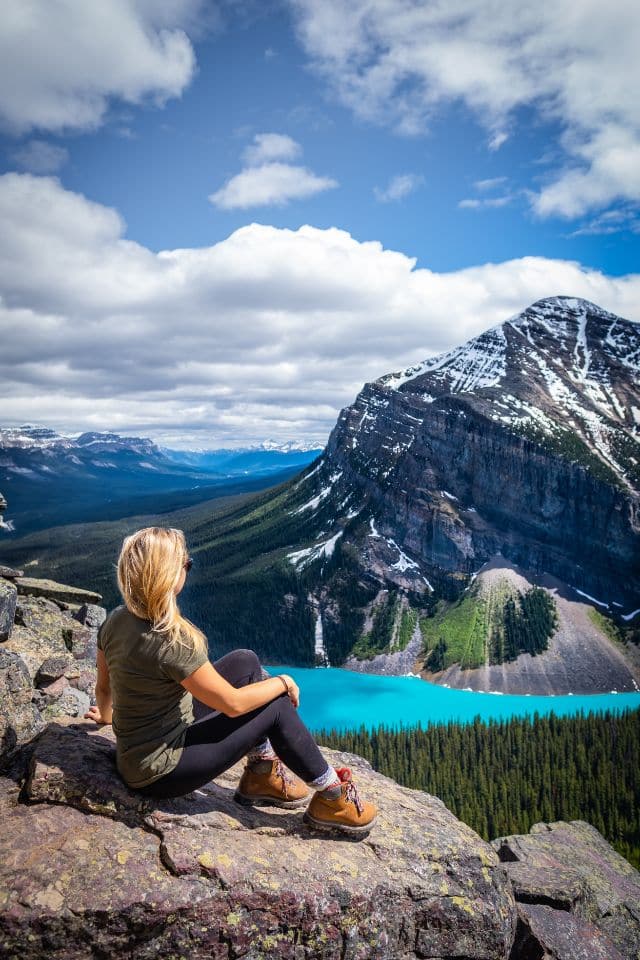
27. Hiking for Beginners – Post Hike
Once you complete your hike give yourself a high five! However, you’re not done yet! It’s important to make sure you stretch when you are finished hiking. This is especially true for new hikers as you just used a ton of muscles you may have never utilized before. Hiking is a full body exercise!
Hydrate and replenish yourself. Ensure you’ve had enough water for the day and eat a proper delicious meal – you’ve likely just burned a ton of calories! Remember to wash your hiking clothes and take care of things like your hiking boots and down jacket. If anything gets wet, make sure to let it dry out so it doesn’t get moldy.
28. Remember It’s Natural to Have Fears of Hiking
It’s okay to be intimidated your first time hiking, especially when there is a tall mountain staring at you right in the face. Nature can throw a lot at you whether it’s wildlife, weather, or elevation, and then there are your own personal fears like getting lost and mental and physical ability.
One of my top pieces of advice is to keep a good attitude and don’t let one bad experience scare you. One of my top hiking for beginners tips is not to let your brain and negative thinking hinder you. Remember, if something ever doesn’t feel right, it’s okay to turn around! And if you need extra internet assurance check out my top hiking quotes!
29. Wildlife Encounters on the Trail
Wildlife encounters are not something only newer hikers have to deal with. Everyone should be prepared to encounter wildlife on the trail. If you are in bear country, you should never go out without bear spray. And each person in the group should have their own bear spray, don’t rely on one bear spray for multiple people. Other hiking tips to help you with wildlife encounters are to:
- Try not to hike alone. Having just one other person to talk to and make noise with will deter animals.
- Stick to popular hiking times like peak summer on a weekend if you are alone. Popular trails rarely have wildlife on them.
- I don’t like music blasters, but if you are alone listening to a podcast while hiking will create the ambiance of a group.
- Be on the lookout for fresh animal tracks and droppings.
- Most wildlife wants to avoid humans, keep that in mind.
- If you come across a bear don’t run. Remain calm and let the bear know you are there by talking and backing away slowly. In a very rare case, the bear chargers utilize your bear spray.
- Your bear spray should always be accessible and able to be reached within 2 seconds. Having bear spray at the bottom of your pack is pretty much the same as not having it at all.
- Let your local park know of any rare sightings like wolves, bears, or cougars.
- If you’re hiking with a dog keep it leashed. This is for the pet’s safety an
Natasha
Hi, I'm Jennifer!
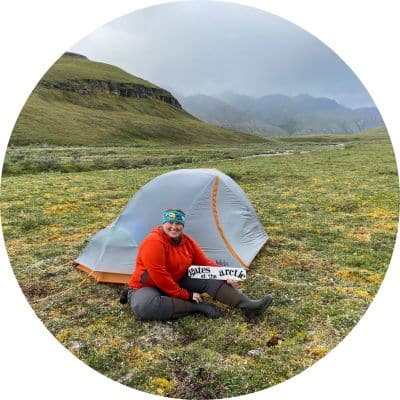
Welcome to the wonderful world of National Parks. I'm here to help you plan your NEXT amazing adventure through the United States National Parks and beyond. I want the national parks to be accessible to all.
I live in Tennessee, and when I'm home, you can find me hiking in the Smokies and the Cumberland Plateau.
58/63 National Parks
250+/423 National Park Units
Want to know more? Start Here.
ACKNOWLEDGEMENT OF LAND
On this site, we promote travel to the United States and beyond that are the traditional lands of Indigenous and First Nations peoples.
With respect, I make a formal land acknowledgment, extending my appreciation and respect to these lands’ past and present people.
To learn more about the people who call these lands home, I invite you to explore Native Land.
DISCLAIMER
National Park Obsessed assumes no responsibility or liability for any errors or omissions in the content of this site (NationalParkObsessed.com). The information contained in this site is provided with no guarantees of completeness, accuracy, usefulness or timeliness. You are encouraged to conduct your own due diligence before acting on the information provided on this site and should not rely on the opinions expressed here.
There is an inherent risk in all outdoor recreation activities, the reader assumes all responsibility for their own personal safety.
DISCLOSURE
We are a participant in the Amazon Services LLC Associates Program, an affiliate program designed to provide a means for us to earn fees by linking to Amazon.com and affiliated sites.
Privacy Policy • About Us • Contact
Select stock photography provided depositphotos
Copyright ©2023 National Park Obsessed, LLC
